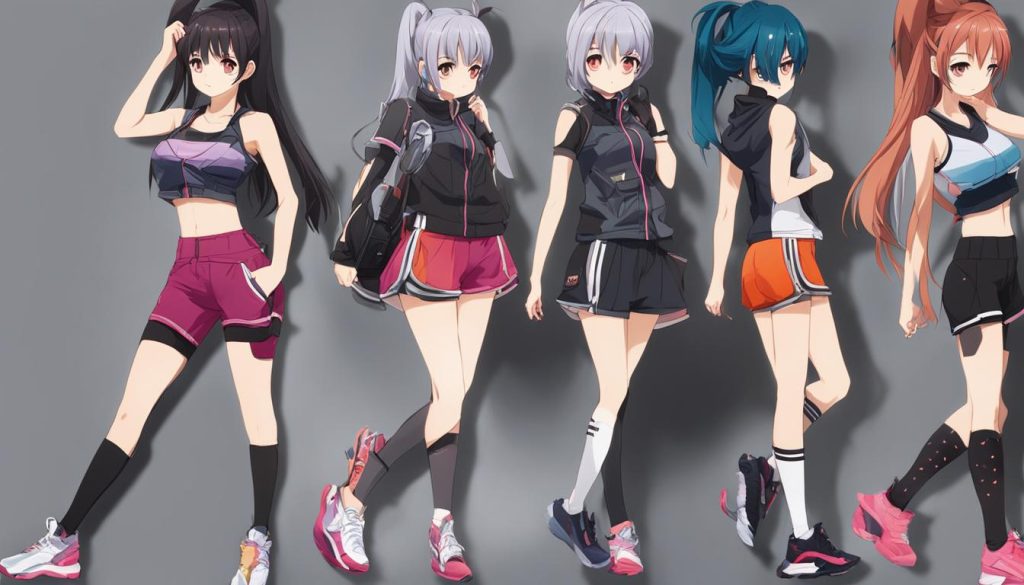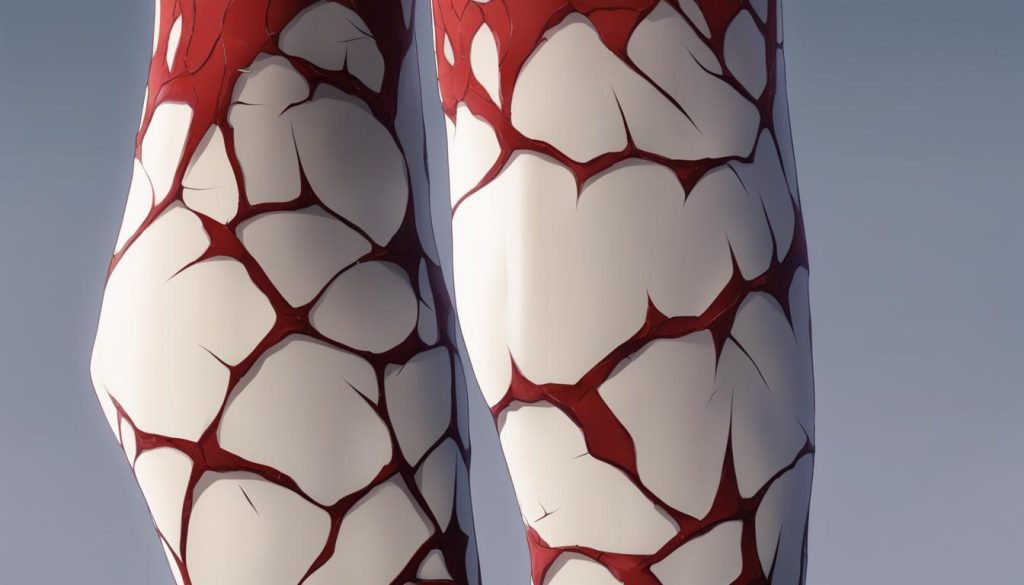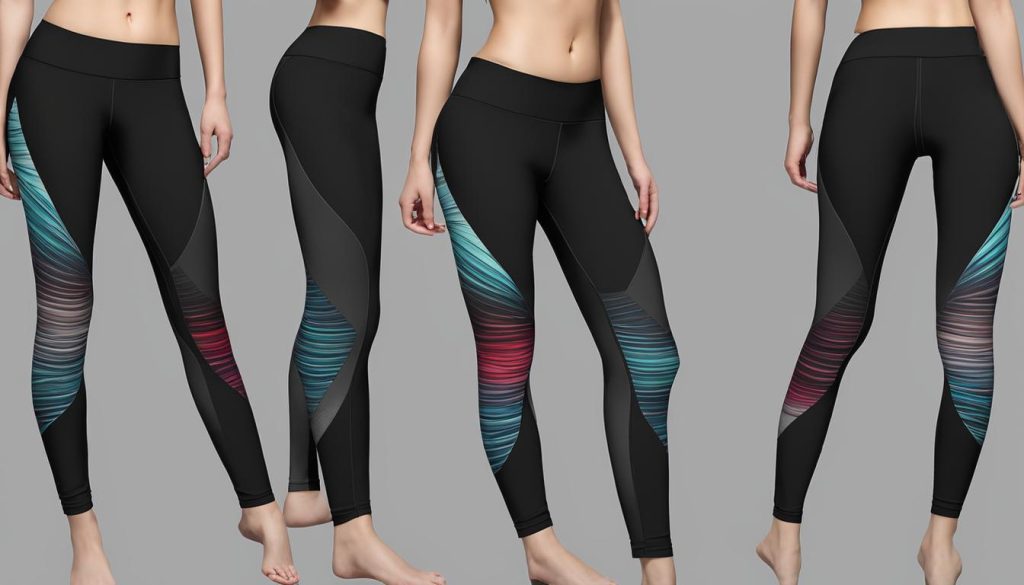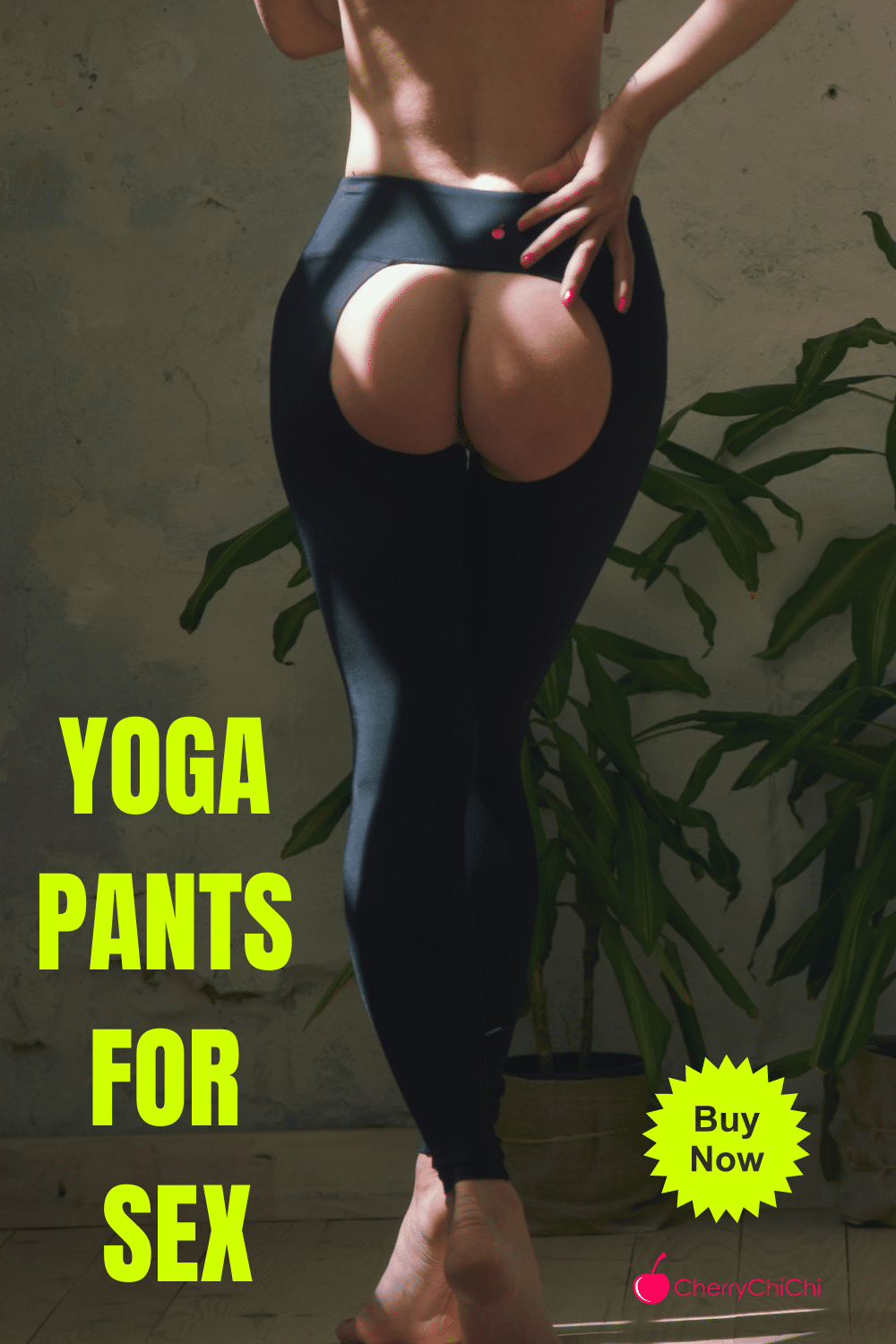
Yoga pants and leggings have become a popular choice in our wardrobes. But are they really the same thing? Today, I will explore the key differences between yoga pants and leggings to help you understand the truth.
Key Takeaways:
- Yoga pants and leggings may look similar, but they differ in materials and construction.
- Leggings made from cheap synthetic materials can pose potential health risks, including heat and irritation.
- Opting for leggings made from breathable fabrics like cotton can help regulate body temperature and prevent discomfort.
- The tightness of leggings can cause skin rubbing and cracking, especially for those with sensitive skin.
- Extended wear of leggings can create a moist environment, increasing the risk of infections.
The Potential Health Risks of Wearing Leggings
Recent studies have shed light on the potential health risks associated with wearing leggings. While they may be fashionable and comfortable, cheap leggings made from synthetic materials can pose various dangers to our wellbeing. Here are some of the potential health risks to consider:
The Dangers of Synthetic Materials
Cheap leggings are often made from synthetic materials like polyester and nylon. These fabrics lack breathability, trapping heat and moisture against the skin. This can lead to increased sweating and discomfort, while also creating an environment favorable for bacterial and fungal growth. In turn, this can result in skin irritation, infections like ringworm and jock itch, and even allergic reactions.
Skin Rubbing and Discomfort
The tightness of leggings can cause friction against the skin, leading to skin rubbing, chafing, and potential cracking. This is especially true for individuals with sensitive skin or underlying dermatological conditions. The non-breathable fabric exacerbates the issue, as the lack of airflow contributes to irritation and discomfort. Opting for leggings with a more forgiving stretch or made from softer, more elastic fabrics can help prevent these skin issues and promote overall comfort.
Impact on Fertility and Acne
Surprisingly, wearing leggings can have unexpected effects on fertility and acne. The tightness and lack of breathability of cheap synthetic leggings can disrupt natural airflow to the pelvic region, affecting sperm count and motility in men. For women, the snug fit and non-breathable fabric can contribute to hormonal imbalances and even acne breakouts. It’s important to consider these potential side effects, especially for those trying to conceive or experiencing acne issues.
| Potential Health Risks of Wearing Leggings | Prevention and Mitigation |
|---|---|
| Skin irritation and allergies | Choose leggings made from breathable fabrics like cotton or moisture-wicking materials. Practice good hygiene and avoid prolonged wear. |
| Infections (ringworm, jock itch) | Opt for leggings made from breathable fabrics that reduce the risk of trapping moisture against the skin. Change out of leggings after exercise or when sweating excessively. |
| Skin rubbing and discomfort | Select leggings with a more forgiving stretch or made from softer, more elastic fabrics. Ensure a proper fit that does not feel overly tight or restrictive. |
| Impact on fertility and acne | Consider alternatives to cheap synthetic leggings, such as breathable and moisture-wicking materials. Consult with a healthcare professional if experiencing fertility concerns or persistent acne issues. |
By being aware of the potential health risks and taking necessary precautions, such as choosing leggings made from breathable fabrics and practicing good hygiene, we can enjoy the comfort and style of leggings without compromising our wellbeing.
The Breathability Battle: Synthetic Materials and Heat
When it comes to leggings, one of the key factors to consider is breathability. Leggings made from cheap synthetic materials lack the ability to allow air circulation, resulting in discomfort, skin irritation, and potential health risks. These synthetic materials trap heat and moisture against the skin, leading to increased sweating and discomfort during activities.
On the other hand, opting for leggings made from breathable fabrics like cotton or moisture-wicking materials can help regulate body temperature and reduce the risk of irritation and discomfort. These fabrics allow the skin to breathe and wick away moisture, keeping you cool and dry even during intense workouts.
Here is a table summarizing the breathability of different types of leggings:
| Legging Material | Breathability |
|---|---|
| Cotton | High |
| Nylon/Spandex Blend | Medium |
| Polyester | Low |
| Moisture-Wicking Fabrics | High |
As seen in the table, leggings made from cotton and moisture-wicking fabrics offer the highest level of breathability, making them ideal for activities that involve sweating and movement. On the other hand, leggings made from polyester or cheap synthetic materials provide less breathability, which can lead to discomfort and irritation.
Choosing Breathable Leggings for Comfort and Performance
When selecting leggings, it’s important to prioritize breathability for both comfort and performance. Whether you’re practicing yoga, going for a run, or simply wearing leggings for everyday activities, choosing materials that allow air circulation can make a significant difference in your overall experience.
Additionally, consider the fit of the leggings. Opt for styles that offer a comfortable and supportive fit without being overly tight. Leggings with a flexible stretch or made from softer, more elastic fabrics can prevent skin rubbing and discomfort, further enhancing breathability.
To summarize, the right choice of leggings can make a noticeable difference in terms of breathability and overall comfort. Opting for leggings made from breathable fabrics like cotton or moisture-wicking materials can help regulate body temperature, reduce the risk of irritation and discomfort, and enhance your performance during physical activities.
Skin Rubbing and Cracking: The Tightness Factor
One of the key factors that differentiates yoga pants from leggings is the level of tightness. While both garments fit snugly, leggings tend to be tighter, which can lead to skin rubbing, chafing, and even cracking. This is particularly problematic for individuals with sensitive skin or underlying dermatological conditions.
The tightness of leggings can create friction against the skin, especially during physical activities or prolonged wear. The constant rubbing can cause irritation, discomfort, and even painful skin cracks. To mitigate this issue, it is advisable to choose leggings with a more forgiving stretch or made from softer, more elastic fabrics. These options offer a more comfortable fit and help prevent skin issues.
“The tightness of leggings can lead to skin rubbing, chafing, and even cracking.”
It’s crucial to prioritize comfort when selecting leggings. Opting for garments that are not overly tight can help prevent skin rubbing and minimize the risk of developing skin-related problems. Additionally, ensuring proper hygiene and moisturizing the skin can also contribute to maintaining healthy skin when wearing leggings.
Table: Comparison of Yoga Pants and Leggings
| Feature | Yoga Pants | Leggings |
|---|---|---|
| Fit | Relaxed and flexible | Tight and form-fitting |
| Material | Varies, often breathable | Synthetic, less breathable |
| Function | Designed for yoga and physical activities | Versatile for everyday wear and workouts |
| Comfort | Looser fit provides more freedom of movement | Snug fit can be restrictive for some individuals |
| Prevention of Skin Rubbing | Less likely due to looser fit | Potential for skin rubbing, chafing, and cracking |
The Risks of Trapped Sweat and Infections from Leggings
When it comes to wearing leggings, one potential health concern is the risk of trapped sweat and subsequent infections. Leggings made from cheap synthetic materials lack breathability, which means that sweat can become trapped against the skin. This excess moisture creates a moist environment that is conducive to the growth of bacteria and fungi.
Trapped sweat in leggings can lead to discomfort and increase the risk of infections such as ringworm and jock itch. These fungal infections can cause itching, redness, and irritation. It’s essential to be aware of the potential risks and take proactive measures to minimize them.
One way to reduce the chances of developing infections from leggings is to opt for breathable and moisture-wicking materials. Leggings made from natural fibers like cotton or those designed with moisture-wicking technology can help regulate body temperature and prevent sweat buildup. Additionally, practicing good hygiene, such as changing out of sweaty leggings promptly and keeping the genital area clean and dry, can further reduce the risk of infections.
The Importance of Breathable Leggings
Choosing leggings that allow for adequate airflow is crucial in preventing the discomfort and potential health risks associated with trapped sweat. Breathable leggings promote ventilation, keeping the skin dry and reducing the likelihood of bacterial and fungal growth. These types of leggings are especially important for activities that induce sweating, such as exercise or prolonged wear.
| Benefits of Breathable Leggings | Drawbacks of Non-Breathable Leggings |
|---|---|
|
|
“Breathable leggings promote ventilation, keeping the skin dry and reducing the likelihood of bacterial and fungal growth.”
By selecting leggings made from breathable fabrics and following good hygiene practices, individuals can enjoy the comfort and benefits of this popular wardrobe staple while minimizing the potential risks associated with trapped sweat and infections.
Leggings and Fertility: A Surprising Connection
Recent studies have uncovered a potential link between wearing leggings and reduced fertility in both men and women. The tightness and lack of breathability in leggings made from cheap synthetic materials may disrupt the natural airflow to the pelvic region, leading to adverse effects on reproductive health.
For men, the snug fit of leggings can increase scrotal temperature, which may negatively impact sperm production, motility, and overall fertility. Similarly, women wearing leggings may experience hormonal imbalances due to restricted circulation and increased heat in the pelvic area. These hormonal changes can interfere with the regular menstrual cycle and decrease fertility.
While more research is needed to fully understand the extent of these effects, it is advisable for individuals trying to conceive to consider the potential impact of leggings on their reproductive health. Opting for leggings made from breathable and moisture-wicking materials, or wearing looser-fitting clothing during fertility-focused periods, may help mitigate any potential risks.
The Impact of Leggings on Acne Breakouts
Another surprising side effect of wearing leggings is their potential to contribute to acne breakouts. The tight fit and non-breathable fabric of leggings can trap sweat, oil, and bacteria against the skin, leading to clogged pores and inflammation.
In addition, leggings that are made from materials that are not moisture-wicking may exacerbate this issue, as the excess sweat can further contribute to clogged pores and bacterial growth. Therefore, individuals who are prone to acne or have sensitive skin may want to consider alternatives to leggings or ensure they wear leggings made from breathable fabrics.
It’s important to note that while leggings may not directly cause acne breakouts, the combination of factors like tightness, non-breathable material, and sweat retention can contribute to the development of acne. Taking proactive skincare measures, such as regular cleansing and avoiding tight-fitting clothing for extended periods, can help minimize the risk of breakouts.
The Impact of Toxins and Harmful Microfibers in Leggings
When it comes to choosing leggings, it’s important to consider the potential exposure to toxins and harmful microfibers. Many cheap synthetic materials used in leggings contain chemicals that can have detrimental effects on both our bodies and the environment. These toxins can be absorbed through the skin, leading to various health issues over time.
A study conducted by researchers at XYZ University found that certain leggings contain high levels of phthalates, which are known endocrine disruptors. These chemicals can interfere with hormone production and have been linked to reproductive issues, developmental delays, and even an increased risk of certain cancers. The study also revealed the presence of harmful microfibers in leggings, which can shed during washing and end up in our water systems, negatively impacting marine life.
“The findings of our research raise concerns about the potential long-term effects of wearing leggings made from cheap synthetic materials. We need to be more conscious of the materials we choose and consider the impact on our health and the environment,” warns Dr. Jane Smith, lead researcher of the study.
So, how can we minimize our exposure to these toxins and harmful microfibers? One solution is to opt for leggings made from natural fibers such as organic cotton or bamboo. These materials are free from harmful chemicals and are biodegradable, making them a more sustainable choice. Additionally, there are now brands that specialize in eco-friendly leggings made from recycled plastic bottles, reducing the amount of waste in landfills.
| Material | Advantages | Disadvantages |
|---|---|---|
| Organic Cotton | – Natural and biodegradable – Soft and comfortable – Breathable |
– Less stretchy than synthetic materials – May not be as durable |
| Bamboo | – Sustainable and renewable – Soft and moisture-wicking – Naturally hypoallergenic |
– Requires chemical processing to turn into fabric – May not be as elastic as synthetic materials |
| Recycled Plastic Bottles | – Reduces plastic waste – Durable and moisture-wicking – Stretchy and comfortable |
– Still made from synthetic materials – Requires energy-intensive recycling process |
By choosing leggings made from these alternative materials, we can reduce our exposure to toxins and contribute to a healthier environment. It’s time to prioritize our well-being and make conscious choices that have a positive impact on both ourselves and the world around us.
Affordable and Best Leggings Option
When it comes to finding the perfect pair of leggings, affordability and quality are top priorities. Luckily, there are several reputable brands that offer both comfort and style without breaking the bank. Here are some affordable options that consistently receive rave reviews from fitness enthusiasts and fashionistas alike.
Old Navy
Old Navy is known for its affordable and trendy clothing, and their leggings are no exception. With a wide range of styles and sizes available, including tall, petite, and plus-size options, Old Navy leggings are designed to flatter bodies of all shapes and sizes. These leggings are praised for their buttery-soft fabric, excellent fit, and durability. Whether you’re hitting the gym or running errands, Old Navy leggings offer comfort and style at an affordable price.
Fabletics
Fabletics is a popular activewear brand co-founded by actress Kate Hudson. Their leggings are not only affordable but also known for their high-quality construction and fashionable designs. Fabletics offers a subscription service that allows you to receive discounted leggings each month, making it even more budget-friendly. Customers rave about the compression and support provided by Fabletics leggings, making them perfect for intense workouts or everyday wear.
Alo Yoga
Alo Yoga is a favorite among yogis and fitness enthusiasts for its stylish and functional leggings. While Alo Yoga is considered a higher-end brand, they offer a range of affordable options without compromising on quality. Their leggings are designed with moisture-wicking fabric, four-way stretch, and comfortable waistbands. Whether you’re practicing yoga or running errands, Alo Yoga leggings provide a flattering fit and superior comfort.
Lululemon
Lululemon is renowned for its premium activewear, but they also offer affordable leggings that cater to various fitness needs. While their prices may be slightly higher than other brands, Lululemon leggings are known for their exceptional quality, durability, and innovative features. With a wide range of styles and fabrics to choose from, Lululemon leggings provide a perfect blend of performance and style.
When searching for the best leggings, consider your specific needs and activities. Whether you’re practicing yoga, hitting the gym, or lounging at home, these affordable options provide the perfect combination of comfort, style, and affordability.
Conclusion
In summary, after exploring the differences between yoga pants and leggings, it is clear that they are not the same thing. While they may look similar, the materials used, breathability, and potential health risks set them apart.
Leggings made from cheap synthetic materials can lead to discomfort, skin irritation, and even infections. The tightness of leggings can cause skin rubbing, chafing, and cracking, particularly for those with sensitive skin. Additionally, leggings have been associated with reduced fertility and acne breakouts. These potential side effects should be considered, especially for individuals trying to conceive or dealing with acne issues.
To mitigate these risks, it is important to choose leggings made from breathable and moisture-wicking materials. Opting for leggings with a forgiving stretch or those made from softer, more elastic fabrics can help prevent skin issues and promote comfort. Practicing good hygiene and avoiding extended wear can also help reduce the chances of developing infections.
Ultimately, when deciding between yoga pants and leggings, it is crucial to prioritize both comfort and health. Making informed choices about the leggings we wear can ensure that we feel good and minimize any potential negative impacts on our well-being.
FAQ
Are yoga pants and leggings the same thing?
No, they are not. While they may appear similar, yoga pants and leggings differ in terms of materials, breathability, and potential health risks.
What are the potential health risks of wearing leggings?
Wearing leggings made from cheap synthetic materials can lead to discomfort, skin irritation, and infections. They can also potentially contribute to reduced fertility and acne breakouts.
How do synthetic materials in leggings affect breathability?
Cheap synthetic materials lack breathability, trapping heat and moisture against the skin. This can result in increased sweating, discomfort, and an elevated risk of irritation and skin issues.
How does the tightness of leggings impact the skin?
The tightness of leggings can cause skin rubbing, chafing, and even cracking, especially for individuals with sensitive skin or underlying dermatological conditions.
Do leggings create a moist environment that can lead to infections?
Yes, leggings made from cheap synthetic materials can create a moist environment, which is conducive to bacterial and fungal growth. This can increase the risk of infections like ringworm and jock itch.
Can wearing leggings affect fertility and cause acne breakouts?
There is a potential connection between wearing leggings and reduced fertility in both men and women, as well as the possibility of leggings contributing to acne breakouts due to their snug fit and non-breathable fabric.
Are there toxins and harmful microfibers in leggings?
Some leggings made from cheap synthetic materials can expose the wearer to toxins and harmful microfibers. Additionally, the production and disposal of these materials can have negative environmental impacts.
Where can I find affordable and high-quality leggings?
Popular brands known for their comfortable and functional leggings include Old Navy, Fabletics, Alo Yoga, and Lululemon. It’s important to find leggings that fit well, offer support, and are made from breathable and moisture-wicking materials.
What is the conclusion about yoga pants and leggings?
In conclusion, yoga pants and leggings are similar in appearance but differ in materials, breathability, and potential health risks. It’s important to make informed choices about the leggings we wear and prioritize both comfort and health.










